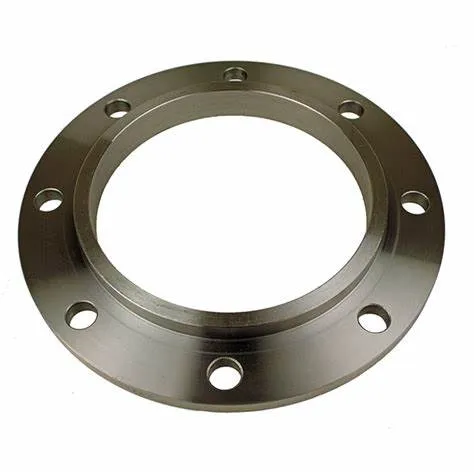-
Cangzhou Yulong Steel Co., Ltd.
-
Phone:
+86 13303177267 -
Email:
admin@ylsteelfittings.com
- English
- Arabic
- Italian
- Spanish
- Portuguese
- German
- kazakh
- Persian
- Greek
- French
- Russian
- Polish
- Thai
- Indonesian
- Vietnamese
- Zulu
- Korean
- Uzbek
- Hindi
- Serbian
- Malay
- Ukrainian
- Gujarati
- Haitian Creole
- hausa
- hawaiian
- Hebrew
- Miao
- Hungarian
- Icelandic
- igbo
- irish
- Japanese
- Javanese
- Kannada
- Khmer
- Rwandese
- Afrikaans
- Albanian
- Amharic
- Armenian
- Azerbaijani
- Basque
- Belarusian
- Bengali
- Bosnian
- Bulgarian
- Catalan
- Cebuano
- China
- China (Taiwan)
- Corsican
- Croatian
- Czech
- Danish
- Esperanto
- Estonian
- Finnish
- Frisian
- Galician
- Georgian
- Kurdish
- Kyrgyz
- Lao
- Latin
- Latvian
- Lithuanian
- Luxembourgish
- Macedonian
- Malgashi
- Malayalam
- Maltese
- Maori
- Marathi
- Mongolian
- Myanmar
- Nepali
- Norwegian
- Norwegian
- Occitan
- Pashto
- Dutch
- Punjabi
- Romanian
- Samoan
- Scottish Gaelic
- Sesotho
- Shona
- Sindhi
- Sinhala
- Slovak
- Slovenian
- Somali
- Sundanese
- Swahili
- Swedish
- Tagalog
- Tajik
- Tamil
- Tatar
- Telugu
- Turkish
- Turkmen
- Urdu
- Uighur
- Welsh
- Bantu
- Yiddish
- Yoruba

Nov . 01, 2024 10:30 Back to list
Techniques for Welding 2G Pipe Joints in Industrial Applications and Projects
Understanding 2G Pipe Welding Techniques and Applications
Pipe welding is a fundamental skill in various industries, including construction, manufacturing, and energy. Among the various welding positions, 2G pipe welding is particularly significant due to its applications in horizontal pipe welding. The term 2G denotes the position in which the pipe is held horizontal while the welder works vertically. This article explores the techniques, challenges, and applications of 2G pipe welding.
Techniques of 2G Pipe Welding
In the 2G position, the welder must carefully control their technique to ensure a strong, quality weld. One common method employed is the stringer bead technique, where the welder moves the electrode straight along the joint, allowing for a smooth and even bead. This technique is particularly beneficial when welding thicker pipes, as it minimizes distortion and ensures deep penetration into the base metal.
Another technique often used is the weave pattern, where the welder moves the electrode side to side while advancing along the joint. This approach is invaluable for achieving wider welds and filling gaps more effectively, especially in pipe diameters larger than six inches. The choice between stringer and weave depends on various factors, including the pipe's thickness, the welder’s skill level, and the specific project requirements.
Challenges in 2G Pipe Welding
While 2G pipe welding has its advantages, it is not without challenges. One of the most significant issues is gravity's impact on the molten weld pool. In a horizontal position, there is a tendency for the weld pool to sag or drop, which can lead to defects such as improper fusion or excessive reinforcement. Welders must maintain a steady hand and adjust their travel speed to counteract these effects.
2g pipe weld

Additionally, the cleanliness of the pipe surfaces is crucial in the welding process. Contaminants such as oil, rust, or dirt can severely affect the quality and integrity of the weld. Proper preparation of the surface, including grinding or cleaning, is essential before starting the welding process to avoid these issues.
Applications of 2G Pipe Welding
2G pipe welding is widely used across various sectors. In the oil and gas industry, horizontal welding is critical for constructing pipelines that transport crude oil and natural gas. Similarly, in the construction of water supply systems, 2G welding ensures the integrity and durability of the pipes used.
Moreover, 2G welding finds applications in manufacturing facilities where large pipe systems are common, particularly in HVAC and plumbing setups. The ability to effectively weld in the 2G position is a valuable skill for welders, enhancing their versatility and employability in various industries.
Conclusion
In summary, 2G pipe welding is an essential technique in the welding profession, characterized by its unique challenges and wide-ranging applications. By mastering the techniques of this position, welders can ensure high-quality and robust joins that meet the demands of various industrial applications. As industries evolve, the importance of skilled 2G pipe welding remains a cornerstone of engineering and construction practices.
Latest news
-
ANSI 150P SS304 SO FLANGE
NewsFeb.14,2025
-
ASTM A333GR6 STEEL PIPE
NewsJan.20,2025
-
ANSI B16.5 WELDING NECK FLANGE
NewsJan.15,2026
-
ANSI B16.5 SLIP-ON FLANGE
NewsApr.19,2024
-
SABS 1123 FLANGE
NewsJan.15,2025
-
DIN86044 PLATE FLANGE
NewsApr.19,2024
-
DIN2527 BLIND FLANGE
NewsApr.12,2024
-
JIS B2311 Butt-Welding Fittings LR/SR 45°/90° /180°Seamless/Weld
NewsApr.23,2024











